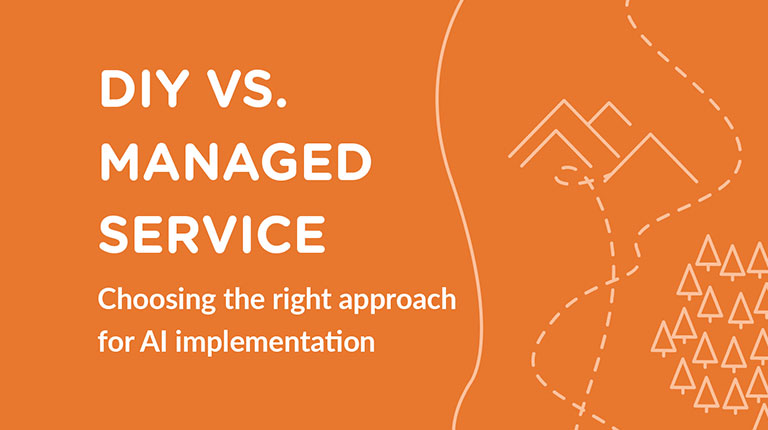Recent disruptions in the workplace due to COVID-19 have left contact centers scrambling to fill the gaps created by limited or impacted workforce. Long wait times and unanswered calls increases customer dissatisfaction in an already frustrating situation. In a rush to resolve these issues companies are looking at solutions that will lead to instant improvement. Automation powered by Conversational AI is being discussed and considered more frequently than ever before. However, despite the ongoing crisis, companies shouldn’t make the mistake of settling for a quick fix or un-strategic solution.
According to Accenture’s Build-to-scale Report, companies strategically scaling AI have nearly 2x the success rate and 3x the return from AI investments, versus companies pursuing siloed proof of concepts. While many short-term fixes are being made where possible, companies need to begin to look at long term, sustainable solutions when it comes to Conversational AI implementations.
In this blog I will give you a few themes to test the validity and feasibility of your Conversational AI implementation to ensure lasting success.
Preparing for the new normal
As a “new normal” settles upon us, companies are considering deploying additional technology to ensure that customers can effectively and efficiently continue to engage with them. Customers often need quick answers to repetitive questions, help with placing orders, confirmation that their account is up to date, and other similar customer service support. Enterprises will need to deploy a solution that will be a constant going forward, spans across channels, offers personalization, and is scalable to customer contact volumes through all business conditions. Many of these tasks can be resolved with Conversational AI, allowing organizations to provide personalized and differentiated experiences that build lasting relationships with their customers.
Doing it yourself versus hiring the experts
But where to start? Over the last few months, many Conversational AI vendors have announced do-it-yourself (DIY) solutions. These are drag and drop tools that appear to be easy to use and claim to not require developer experience. Brands are eager to try these tools, but quickly find that what they are able to build in their testing environment becomes significantly more challenging to deploy at scale. Simple greetings can be quickly built and may streamline the process of connecting a customer to the right agent, but when it comes to changing a reservation or ordering a meal, these more complicated self-serve conversations require design expertise and detailed models be developed that are beyond the scope of those without domain experience. Additionally, integrating the application into back-end systems to offer the customer a personalized experience is a key, but can be very difficult if the back-end systems are not standard. Often, when internal teams run into these design hurdles or back-end integration challenges, the DIY project fails.
Why are AI deployments different from a typical IT project?
Conversational AI solutions with DIY tools are unlike other IT projects. Conversational AI solutions need a team of people to build, train, and maintain the application. As consumers return with new requests for service the conversation needs to evolve and adapt for the customer. To accomplish this, AI needs constant training and tuning, not only to improve the experience but to stay relevant and effective. Building truly effective conversation flows requires design expertise and deep domain knowledge, without this expertise the conversations will seem clunky and robotic, leading to an undesirable customer experience.
Managed services may be the right approach for you
An alternative to DIY is partnering with a managed service vendor who is experienced in Conversational AI. By partnering with a managed service vendor, you are able to collaborate on the strategic goals of the AI project and tap into the expertise of the managed service vendor. The managed service vendor develops the application that works with your business rules and ensures that the outcomes of the solution are closely tied to your KPIs. They provide the technology stack and resources needed to help you quickly get to scale and deliver exceptional experience for your customers. The result is a well designed application delivering an engaging conversational experience that removes pain points that frustrate customers.
Now is the time to take meaningful action and prepare for the future by deploying a sustainable solution. To learn more about how a virtual assistant powered by Conversational AI can future-proof your business, see our whitepaper.





